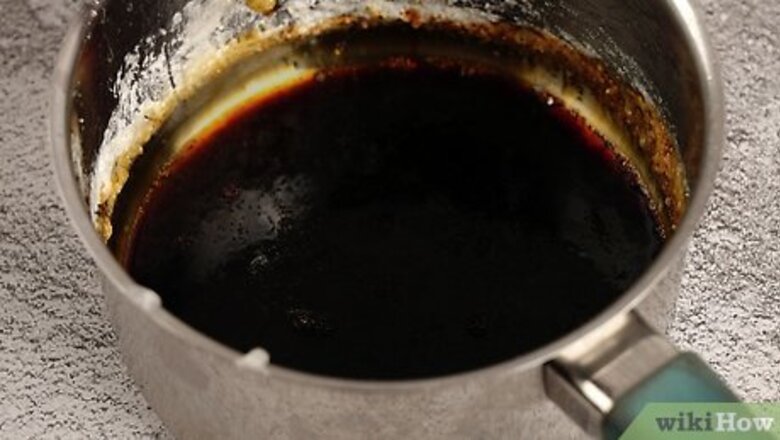
views
Scraping and Freezing

Wait until the caramel cools and solidifies. If only a thin, partially translucent layer remains, you may be able to scrape it off without taking any additional steps. If a thicker layer remains, you may need to soak it before scraping.

Use a kitchen chisel to flake off the dried caramel. Position the chisel at the nearest end of the pot or pan and move the chisel away from you in short strokes. Apply firm, even pressure.
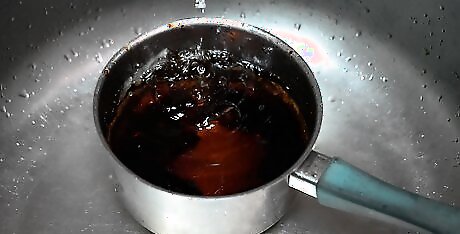
Rinse the pot or pan to remove the flaked off caramel. Pat it dry with paper towels.
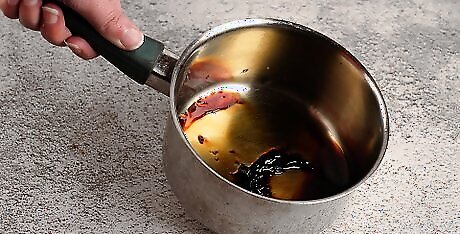
Examine the pan. If additional caramel remains on the bottom of the pan, repeat the scraping and rinsing procedures.
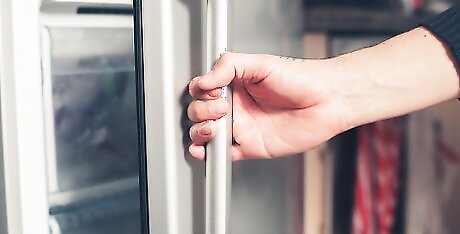
If more caramel remains, place the pan inside a freezer. Leave it there two hours to allow the pan and the burned-on caramel a chance to thoroughly freeze. Frozen food is often easier to chisel away, and caramel becomes especially brittle at below-freezing temperatures.
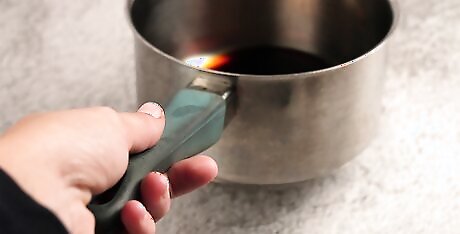
Pull the pan out of the freezer. Repeat the scraping process to chip away the brittle pieces of frozen caramel.
Club Soda
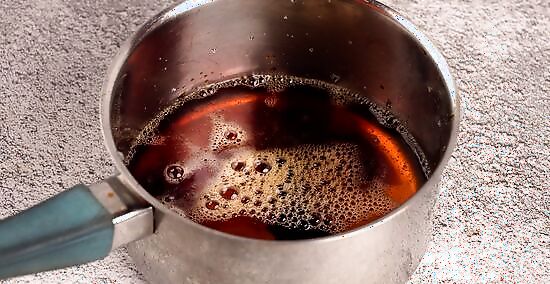
Pour club soda into the pot or pan before it cools. This works especially well for cast iron. The effervescence of the soda reacts with the iron, making the sides slick and difficult to stick to.
After a 15-minute soak, scrub the pot with a dish sponge or washcloth. Do not dump the soda out of the pot. Instead, submerge the sponge beneath the club soda and scrub the pot while the soda is still inside. If a sponge isn't cutting it, try using a Brillo pad.
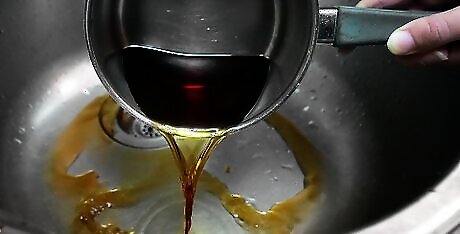
Dump the club soda. Wipe out any remaining flakes of caramel with a dry paper towel.
Hot Water
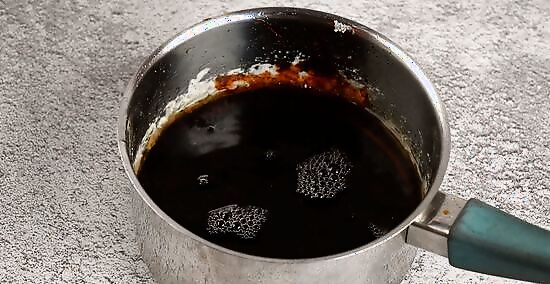
Fill a caramel-lined pot with steaming hot water. You only need enough water to cover the caramel. This is best done immediately after you finish using the pot, before the caramel has had a chance to fully solidify.
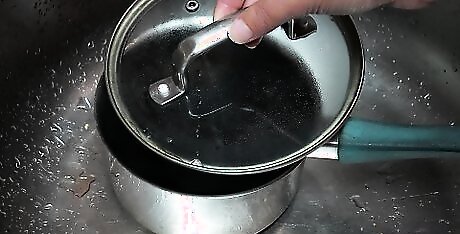
Set the pot down in the sink or on the counter. Cover it, and allow the inside to soak for an hour.
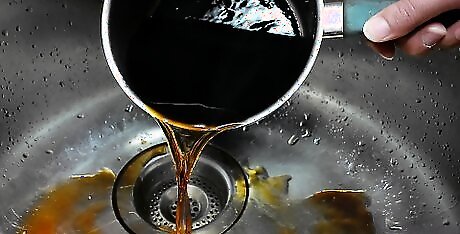
Dump the water out of the pot. If, upon inspection, you still notice a considerable amount of caramel stuck to the pot, try using hotter water.
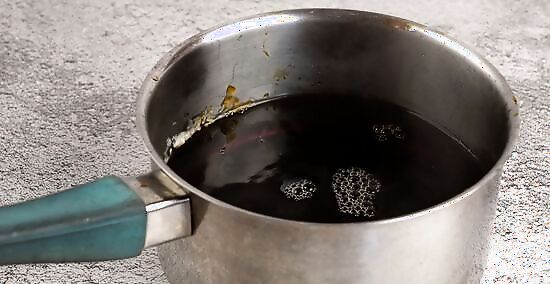
Fill the pot with warm water. Again, you only need enough to cover the caramel.
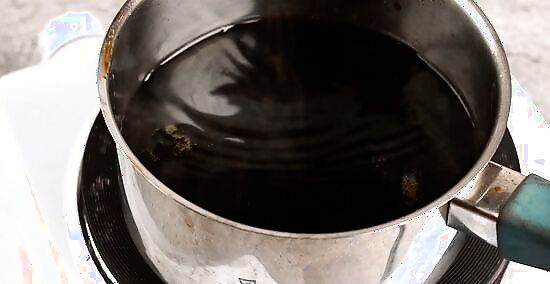
Place the pot on the stove and heat it using medium to medium-high heat. The water should simmer but not quite boil. Allow the water to simmer for at least ten minutes.
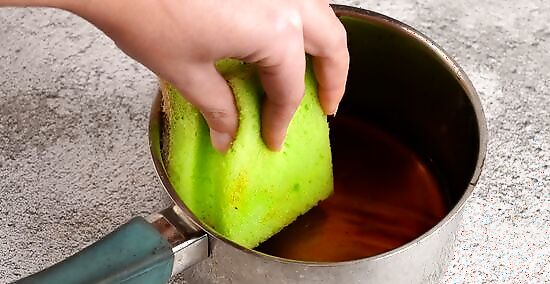
Turn off the heat and dump the water. Scrub away any remaining caramel with a dish sponge.
Salt Water

Fill an enamel pot or pan with salt water. Dump in 1 tablespoon (14.3 grams) of salt for every cup (250 milliliters) of water you use. Make sure the caramel is completely submerged under water.
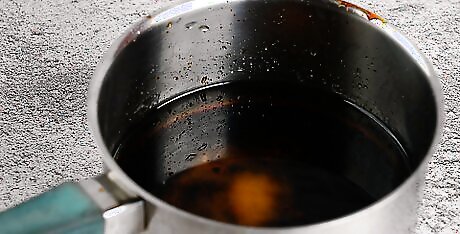
Allow the salt water to sit in the pot overnight. Do not dump the water out beforehand, no matter how murky or dingy it may look.
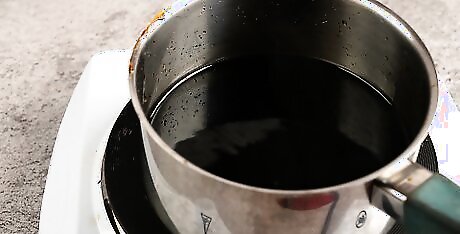
Boil the salt water inside the pot the following day. By now, the salt should have weakened the stuck-on caramel, causing it to lift off the sides of the pot as soon as the water heats up.

Dump the water. Gently scrub the sides of the pot with a dish sponge. Any remaining caramel should lift off without much difficulty.
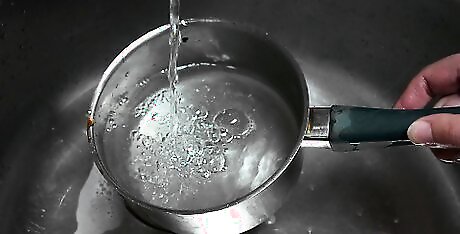
Rinse the pot. Use running water to remove any residual flakes of caramel.
Dishwashing Detergent or Fabric Softener
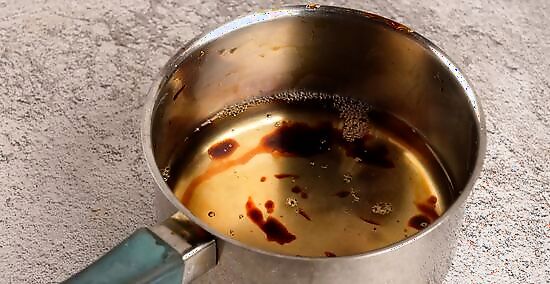
Fill your pot or pan with enough warm water to completely submerge the caramel. This can either be done while the caramel is still warm or after it cools.
Squirt in some dishwashing soap. You can also use fabric softener. If the caramel has already hardened and seems especially stuck, fabric softener may prove more helpful, since many dishwashing detergents may be too mild.

Allow the pan to soak for an hour, at minimum. The water should be a dingy brown by the time you return to it.

Scrub the pan with a dish sponge. Submerge the sponge beneath the water and vigorously scrub at the caramel until it chips away. After soaking for an hour, it should wipe away with relative ease.
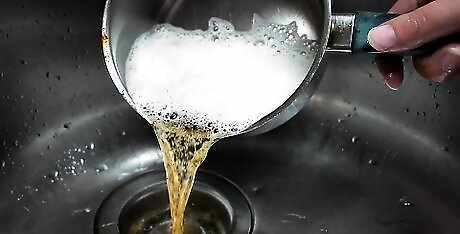
Dump the water. Give the pan a final rinse beneath running water.


















Comments
0 comment